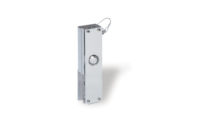Atlas Weather-Ometers Meet New ASTM Method

CHICAGO – Atlas Material Testing Technology announced that its Ci Series Weather-Ometers meet the recently published test method ASTM D 7869-13, Standard Practice for Xenon Arc Exposure Test with Enhanced Light and Water Exposure for Transportation Coatings.
For over 20 years, SAE J1960 (and the performance-based equivalent, SAE J2527) has been the most popular test method used for testing automotive exterior materials. First developed by General Motors in the mid-1980's, the test method was soon adopted by several other automotive OEMs, especially in the United States and Japan. Despite the popularity of this method, it was deficient in terms of the quality of the spectral power distribution (SPD) for the light source, moisture delivery, and irradiance level to provide meaningful acceleration and correlation.
Automotive OEMs, major paint suppliers and weathering instrument manufacturers have conducted work for nearly 10 years to develop an artificial test that better replicates natural exposures, where South Florida is the benchmark, demonstrating that good scientific methodology and an understanding of both material sensitivities and details of the natural environment can be utilized to develop better artificial test cycles. The new standard has received the designation ASTM D 7869-13 and is titled Standard Practice for Xenon Arc Exposure Test with Enhanced Light and Water Exposure for Transportation Coatings.
Highlights of the new standard include:
- Tighter SPD requirements to match the short wavelength UV found in terrestrial daylight (The Atlas Right Light™ filter meets these requirements and was the basis for the ultimate requirements listed in the new test method.);
- Multiple irradiance levels to better match real-world conditions;
- A sub-cycle with rapid changes in conditions to simulate thermal shock effects and test a material's mechanical and expansion/contraction properties as they relate to weathering; and
- Longer dark phases with spray to match the moisture uptake seen in South Florida exposures.
The method also describes in detail a means to verify minimum spray requirements and a detailed justification of each phase within the test cycle. All current Atlas Weather-Ometers can fully meet the requirements of the standard. New user interface software will soon be released that includes this cycle as a preprogrammed test or it can easily be programmed as a custom test method.
Looking for a reprint of this article?
From high-res PDFs to custom plaques, order your copy today!





